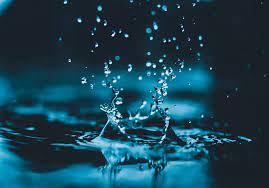MARCH 2024
The CWSRF program will send out an email in March to municipalities, districts, and engineers, soliciting projects to be funded through the CWSRF program. The solicitation has two purposes. First, we must demonstrate to EPA that the State has compiled a list of projects, which supports the need for the CWSRF federal capitalization grant. Second, we need to rank the projects to determine which ones will receive loan principal forgiveness and, if so, how much.
Federal law and appropriations govern how much funding the CWSRF programs receive and may offer, if any, in the form of “additional subsidies” to borrowers. Maine allocates its additional subsidies to borrowers in the form of loan principal forgiveness (PF). Congress is currently deliberating on a final federal budget so states have not yet been notified what their capital grant will be for 2024.
We anticipate Maine’s supplemental CWSRF funding under the Bipartisan Infrastructure Law (BIL) to be approximately $19M for 2024. Between the CWSRF base, BIL Supplemental, BIL Emerging Contaminant, and repayments that come back into the program for reuse, we will have an estimated $54M in available funds, of which an estimated $10M will be in the form of principal forgiveness and/or grants. As in previous years, the PF will go to projects that have the greatest environmental benefit and where the applicant would experience significant financial hardship if additional subsidies were not provided.
In 2024, we also intend to offer PF funding for:
- Fiscal Sustainability Plan (FSP) - up to $50,000 for the development and implementation of a FSP or the improvement to an existing FSP. (Requires a 100% match from the applicant).
- Climate Adaptation Plan (CAP) - up to $25,000 for the development of a Climate Adaptation Plan (CAP). (No match required).
- Stormwater /Nonpoint Source (SW/NPS) Plans - new this year, we will offer up to $50,000 per applicant in PF for funding assistance to develop a SW/NPS. (Match required).
Please monitor your email inbox for the solicitation letter coming out in March. Applications must be submitted to Maine.CWSRF.Grants@maine.gov by 5:00 p.m., April 8, 2024.
For more information or questions , please visit the CWSRF webpage for the announcement letter, application forms, and supporting documents at SRF Loan Fund, Maine Department of Environmental Protection. For more information or questions, please email, Maine.CWSRF.Grants@maine.gov.

Don’t wait until the last minute to prepare for seasonal chlorination/disinfection! It is a good idea to start getting ready early so there is time to make adjustments/repairs as necessary.
Your chlorine contact chamber (CCC) may have accumulated water/solids during the winter that need to be cleaned-out/emptied. Be mindful of properly treating solids/residuals that are removed from the CCC. Perform a thorough inspection of the chlorination system to ensure the integrity of the entire system. Meter accuracy can be verified by pumping into a bucket or barrel of known volume and comparing it to the meter readings. Tank(s) should be visually inspected for corrosion and physical damage. Verify treatment chemicals are properly stored to capture any leaks in a secondary containment area.
Start-up procedures for chlorination/ disinfection include:
- Check that all valves are in their proper position and tagged
- All piping should be inspected and found to be in operating condition
- Feed and safety equipment should be checked and found in operating condition
- Procedures should include a program to sequentially open valves, and start equipment
Once operating, the operator must verify that chemical feed rates are correct. Test the total chlorine residual (TRC) at least twice on separate days and evaluate results to ensure target doses and residuals are being met. Make system adjustments as needed.
|
MEWEA and MWUA recently notified their members of a WEF Water Advocate Portal that allows people to easily contact Congress to encourage robust funding of the Infrastructure Investment & Jobs Act in FFY 24. The level of funding provided by Congress will directly impact the amount of loan and principal forgiveness funds available from the Department under the CWSRF and Bipartisan Infrastructure Law (BIL).
The WEF Water Advocate Portal is here:
Support Funding for Water Infrastructure in FY 2024!
EPA’s Office of Water has developed a new Troubleshooting Manual for Small, Facultative, Partial-Mix Aerated, and Complete-Mix Aerated Wastewater Lagoons as part of efforts to support small, rural, and tribal communities who operate wastewater lagoon treatment systems.
The manual focuses on small facultative and aerated wastewater lagoon systems. It contains information to diagnose the root causes of a system’s operational issues and offers remedies to optimize system performance.

Starting on March 5, 2024, the U.S. Environmental Protection Agency’s (EPA) Creating Resilient Water Utilities (CRWU) initiative and EPA Region 1 are providing a series of six free webinars for wastewater utility owners and operators in New Hampshire and Massachusetts that have been and/or will be issued NPDES permits that contain new major storm and flood event adaptation planning requirements. Utilities, permit writers, and stakeholders from other states in EPA Region 1 can also benefit and are also welcome to attend.
This FREE training can benefit all utilities in New England from a climate resilience planning perspective. Sessions are 10 AM-noon on March 5, 7, 12, 19, 26, and 28. Two TCHs/session are awarded by MEDEP. Contact ramming.audrey@epa.gov with any questions, or go to this Link to register.
|
JETCC is pleased to announce an in-person Pipe Locating & Leak Detection class held at the Maine Water Company in Biddeford on March 7.
This 6-hour class will cover the basic theory of pipe locating for both water and sewer utilities including:
- Ground Penetrating Radar
- How pipe locators work
- How to troubleshoot difficult locates
- How to handle and avoid bleed off and distorted signals
- Tools for plastic pipe locating
- GPS mapping for utilities
- Overview of how leak detectors work
For more information, visit www.jetcc.org.
NEWEA will be offering a four-session, 12-hour virtual training class on March 19-22, 2024 to help analysts prepare for the Lab Analyst Exam 1. Subjects include sampling, solutions/dilutions, common wastewater tests, microscope basics, QA/QC, lab safety, and recordkeeping.
This course does NOT include the exam, which is administered through NEWEA. NEIWPCC highly recommends those planning to take the exam apply with NEWEA approximately 45 days prior to attending our exam prep course.
Please visit NEWEA’s website for more information or to apply to take an exam: https://www.newea.org/careers/certification/analyst-certification-program/
If you missed the deadline, you can still renew for the next 6 months by completing required TCHs and submitting the renewal fee, plus a $100 late fee to certification@neiwpcc-jetcc.org. After 6 months (October 1), operators need to retake their certification exam in order to achieve Active status.
1. Bacteria are
a. The workhorse of the activated sludge process that convert the organic wastes into cell matter
b. Blue-green algae species
c. Higher life forms used as indicator species to help make process control decisions
d. Very small, mutated viruses
2. Protozoa are single-celled animals that are
a. Larger than bacteria
b. Smaller than bacteria
c. Very long and stringy
d. The backbone of floc
3. Protozoa are “indicators” in that they
a. Indicate the presence of nematodes and filter flies in a trickling filter or RBC
b. Indicate the degree of treatment to help operators make process control decisions
c. Indicate whether filamentous bacteria will be “sheathed” or “bulking”
d. Indicate fungi is a mushroom
4. While some filamentous bacteria are necessary to form the “backbone” of floc particles, excessive filamentous bacteria can cause
a. Denitrification in the secondary clarifier
b. Short-circuiting
c. “Rotten egg” odors
d. Sludge bulking problems that cause poor settling in the clarifier
5. You are examining the MLSS from a healthy extended aeration plant. The Cell Residence Time (CRT) is 30 days. Since this is an “older” sludge compared to a Conventional Activated Sludge (CAS) plant, you would expect to see:
a. Lots of amoebas
b. Mostly flagellates with some free-swimming ciliates
c. No rotifers or nematodes
d. A large rotifer population
6. If your plant is experiencing a filamentous bacteria problem, it is important to:
a. Identify the type of filamentous so you can determine the cause of the problem and make changes to reduce the chance of reoccurrence
b. Cultivate the specific antigen to reduce occurrence
c. Purchase “scavenger” bacteria to “eat” the filaments
d. Acidify the RAS
7. It is good practice to perform microscopic analysis on the MLSS at what frequency:
a. Every few hours so incoming operators can see what is going on
b. Only when there is a crisis and you need to make changes FAST
c. Once a week during normal operations and more often when there is an upset
d. Six months before your MEPDES is about to expire
8. It is determined that your plant has a filamentous bacteria problem and will chlorinate the RAS. According to “Practical Control Methods for Activated Sludge Bulking and Foaming” by Michael Richards, effective chlorine dosages for RAS chlorination to control filamentous are usually in the range 1-10 lb/day/1000 lb MLVSS for 2-4 days. You decide to hit it hard with 5 pounds of chlorine/1000 pounds of MLVSS inventory/day for the first day, then lower the chlorine dosage based on microscopic analysis.
If the MLVSS is 2200 mg/L and the A.T. volume is 0.6 MGD, what is the chlorine feed rate in lb/day to achieve a chlorine dosage of 5 lbs/day/1000 lb MLVSS? How many gallons/day of hypo would you need?
The formula for chlorine feed rate, lb/day:
Chlorine feed rate, lb/day = desired chlorine dosage lb/day/1000 lb MLVSS.
1 gal of 12% hypochlorite solution contains approximately 1 lb of chlorine
Answers:
1. A
2. A
3. B
4. D
5. D
6. A
7. C
8. 55 gal/day of hypochlorite
Using the Pounds formula, calculate the MLVSS inventory under aeration:
2200 mg/L X 8.34 X 0.6 MGD = 11,009 lb MLVSS
Calculate the chlorine feed rate = (Chlorine dosage X MLVSS, lb)/1000 lb MLVSS
= (5 lb chlorine X 11,009 lb MLVSS) /1000 lb MLVSS/day = 55 lb chlorine/day
Since 1 gal of 12% hypochlorite contains approximately 1 lb of chlorine, you would need 55 gal/day of hypo.
|